Intake Manifold Replacement Upper
Removal Procedure
- Disconnect the negative battery cable. Refer to
Caution: Unless directed otherwise, the ignition and start switch must be in the OFF or LOCK position, and all electrical loads must be OFF before servicing any electrical component. Disconnect the negative battery cable to prevent an electrical spark should a tool or equipment come in contact with an exposed electrical terminal. Failure to follow these precautions may result in personal injury and/or damage to the vehicle or its components.
in General Information. - Remove the air cleaner box and intake duct. Refer to Air Cleaner (Air Intake Duct) in Engine Controls.
- Remove the wiring harness connectors and brackets and move aside.
- Remove the throttle linkage and cruise control cable (if equipped). Refer to Accelerator Controls (Accelerator Control Cable) in Engine Controls.
- Remove the fuel lines and bracket at the rear of the lower intake manifold. Refer to Fuel Hose and Pipes (Hose and Assemblies) in Engine Controls.
- Remove the brake booster vacuum hose at the upper intake manifold.
- Remove the PCV hose at the upper intake manifold.
- Remove the ignition coil and bracket. Refer to Ignition Coil Replacement in Engine Electrical.
- Remove the purge solenoid and bracket. Refer to EVAP Canister Purge Solenoid in Engine Controls.
- Remove the upper intake manifold bolts and studs.
- Remove the upper intake manifold.
- Clean old pieces of gasket form the gasket surfaces.
- Inspect the manifold for cracks, broken flanges, and gasket surface damage.
Important: Mark the location of all the studs for proper reassembly.
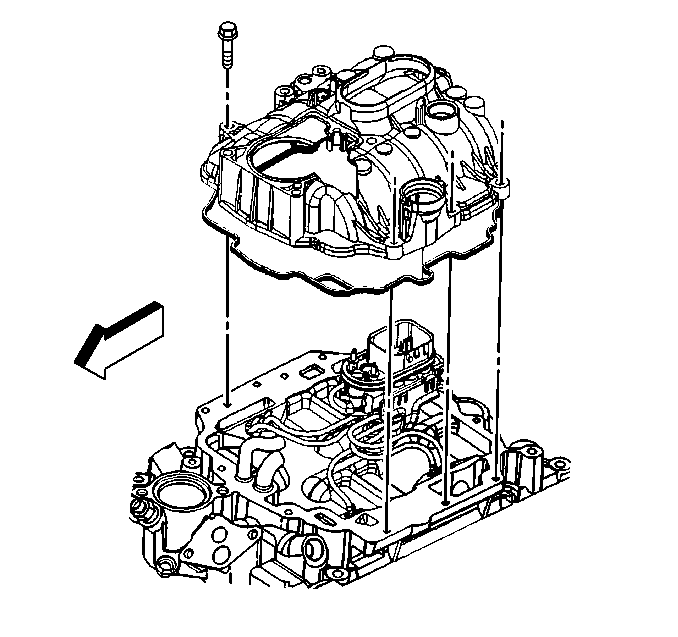
Installation Procedure
- Install the upper intake manifold gasket.
- Install the upper intake manifold. Use care not to pinch the injector lines between the upper and lower intake manifolds.
- Install the upper intake manifold bolts. Note the marks made at disassembly for proper stud location. Install the two corner studs first in order to help align the two halves.
- Install the purge solenoid and bracket. Refer to EVAP Canister Purge Solenoid in Engine Controls.
- Install the ignition coil and bracket. Refer to Ignition Coil Replacement in Engine Electrical.
- Install the PCV hose at the upper intake manifold.
- Install the fuel lines and bracket at the rear of the lower intake manifold. Refer to Fuel Hose and Pipes (Engine Fuel Pipes) in Engine Controls.
- Install the throttle linkage and cruise control cable (if equipped). Refer to Accelerator Controls (Accelerator Control Cable) in Engine Controls.
- Install the wiring harness connectors and brackets.
- Install the air cleaner box and intake duct. Refer to Air Cleaner (Air Intake Duct) in Engine Controls.
- Connect the negative battery cable.
- Fill the cooling system if necessary. Refer to Draining and Filling the Cooling System in Cooling and Radiator.
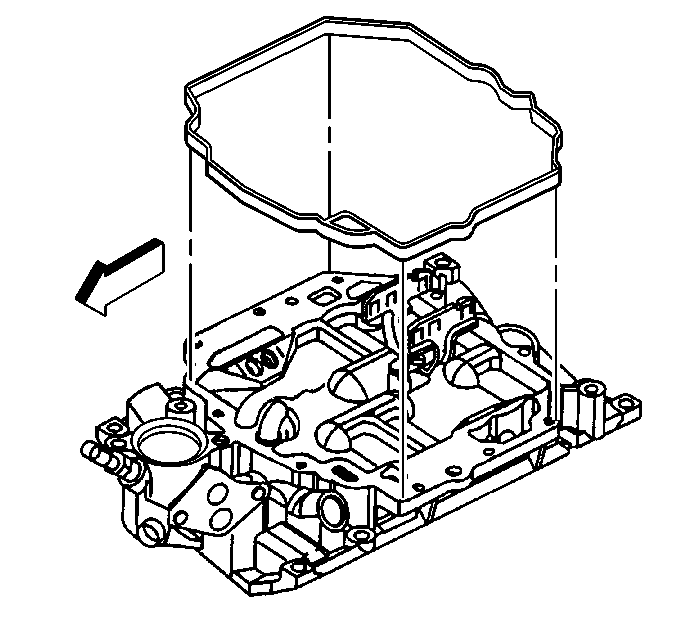

Tighten
Tighten the bolts to 10 N·m (83 lb in).
Notice: Use the correct fastener in the correct location. Replacement fasteners must be the correct part number for that application. Fasteners requiring replacement or fasteners requiring the use of thread locking compound or sealant are identified in the service procedure. Do not use paints, lubricants, or corrosion inhibitors on fasteners or fastener joint surfaces unless specified. These coatings affect fastener torque and joint clamping force and may damage the fastener. Use the correct tightening sequence and specifications when installing fasteners in order to avoid damage to parts and systems.
Intake Manifold Replacement Lower
Removal Procedure
- Remove the distributor. Refer to Distributor Replacement in Engine Electrical.
- Drain the cooling system. Refer to Draining and Filling the Cooling System in Cooling and Radiator.
- Disconnect the upper radiator hose at the thermostat housing. Refer to Radiator Hose Replacement in Cooling and Radiator.
- Disconnect the heater hose at the lower intake manifold. Refer to Heater Hose Replacement in HVAC.
- Remove the EGR valve. Refer to EGR Valve Replacement in Engine Controls.
- Disconnect the coolant bypass hose.
- Disconnect the fuel supply and the return lines at the rear of the lower intake manifold. Refer to Fuel Hose and Pipes (Engine Fuel Pipes) in Engine Controls.
- Disconnect the wiring harness and the brackets. Refer to Wiring Harness Replacement in Engine Electrical.
- Disconnect the throttle cable, the cruise control cable (if equipped) and the bracket from the manifold. Refer to Accelerator Controls (Accelerator Control Cable) in Engine Controls.
- Remove the transmission oil level indicator tube. Refer to Oil Level Indicator Tube Replacement in Automatic Transaxle.
- Remove the EGR tube, the clamp, and the bolt. Refer to EGR Valve Replacement in Engine Controls.
- Remove the PCV valve and the vacuum hoses.
- Remove the air conditioning compressor, the bracket, and the accessory drive bracket. Refer to Air Conditioning Compressor Replacement in HVAC.
- Remove the generator bracket bolt next to the thermostat housing (if needed).
- Remove the lower intake manifold bolts.
- Remove the lower intake manifold.
- Clean the old pieces of gasket from the gasket surfaces.
- Clean the excessive carbon buildup in the exhaust passages.
- Clean the scale and the deposits from the coolant passages.
- Clean the EGR passage of excessive carbon deposits.
- Inspect the manifold for cracks, broken flanges, and gasket surface damage.
Mark the relationship of the distributor housing and the rotor for proper reassembly.
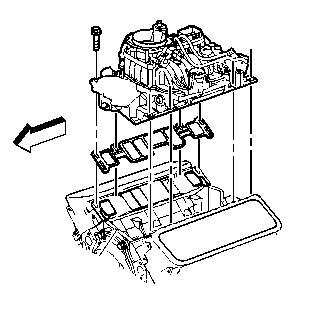
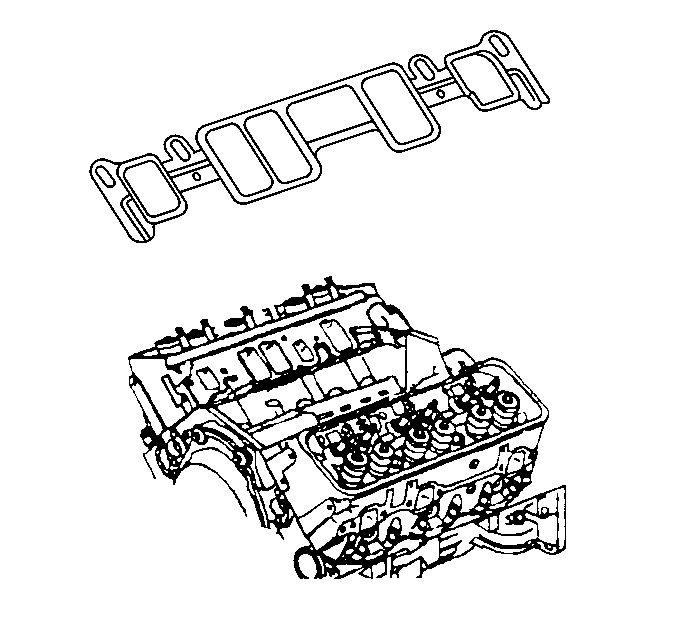
Installation Procedure
- Install the gaskets to the cylinder head with the port blocking plates facing the rear of the engine and the "this side up" stamping facing up.
- Install RTV to the front and the rear sealing surfaces on the block.
- Install the lower intake manifold to the engine.
- Apply sealer, GM P/N 1052080, or equivalent, to the lower intake manifold bolts.
- Install the lower intake manifold bolts. Tighten the bolts in sequence.
- Install the generator bracket bolt next to the thermostat housing.
- Connect the coolant bypass hose.
- Install the EGR valve. Refer to EGR Valve Replacement in Engine Controls.
- Connect the upper radiator hose at the thermostat housing. Refer to Upper Radiator Hose Replacement in Cooling and Radiator.
- Connect the heater hose at the lower intake manifold. Refer to Heater Hose Replacement in HVAC.
- Connect the fuel supply and the return lines at the rear of the lower intake manifold. Refer to Fuel Hose and Pipes (Engine Fuel Pipes) in Engine Controls.
- Connect the wiring harness and the brackets.
- Connect the throttle cable, cruise control cable and the bracket. Refer to Accelerator Controls (Accelerator Control Cable) in Engine Controls.
- Install the transmission oil level indicator tube. Refer to Oil Level Indicator Tube Replacement in Automatic Transaxle.
- Install the EGR tube, the clamp, and the bolt. Refer to EGR Valve Replacement in Engine Controls.
- Install the PCV valve and the Vacuum hoses.
- Install the air conditioning compressor, the bracket, and the accessory drive bracket. Refer to Air Conditioning Compressor Replacement in HVAC.
- Install the distributor. Refer to Distributor Replacement in Engine Electrical. Note the relationship of the distributor housing and the rotor made at disassembly.

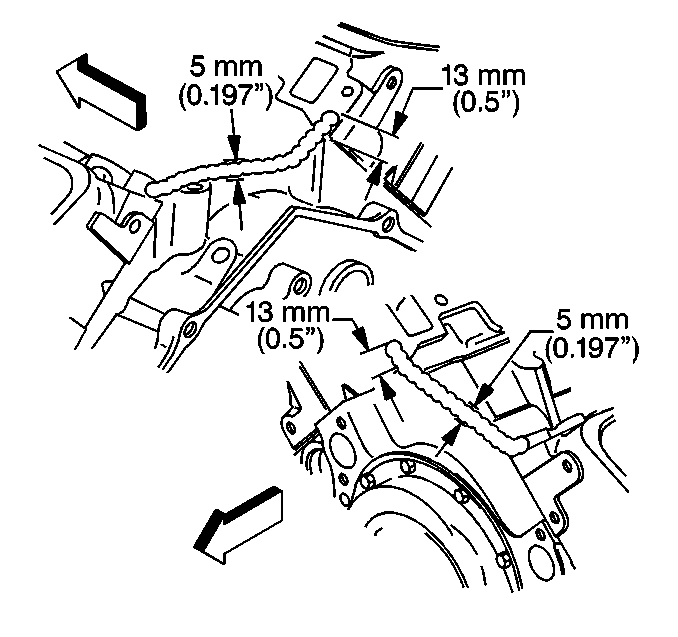
| 2.1. | Apply a 5 mm (0.197 in) bead of RTV GM P/N 1052366, or equivalent, to the front and the rear of the block. |
| 2.2. | Extend the bead 13 mm (0.5 in) up each cylinder head in order to seal and retain the gaskets. |

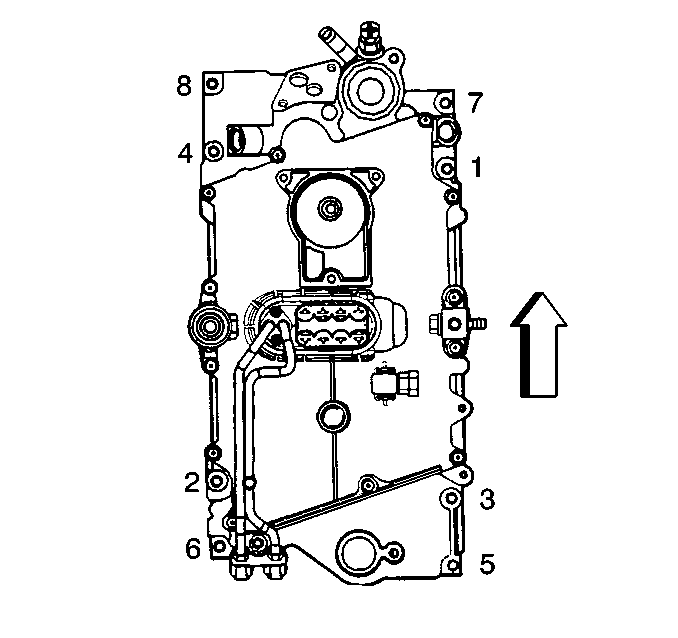
Tighten
| • | Tighten the first sequence to 3 N·m (26 lb in). |
| • | Tighten the second sequence to 12 N·m (106 lb in). |
| • | Tighten the final sequence to 15 N·m (11 lb ft). |
Notice: Use the correct fastener in the correct location. Replacement fasteners must be the correct part number for that application. Fasteners requiring replacement or fasteners requiring the use of thread locking compound or sealant are identified in the service procedure. Do not use paints, lubricants, or corrosion inhibitors on fasteners or fastener joint surfaces unless specified. These coatings affect fastener torque and joint clamping force and may damage the fastener. Use the correct tightening sequence and specifications when installing fasteners in order to avoid damage to parts and systems.
